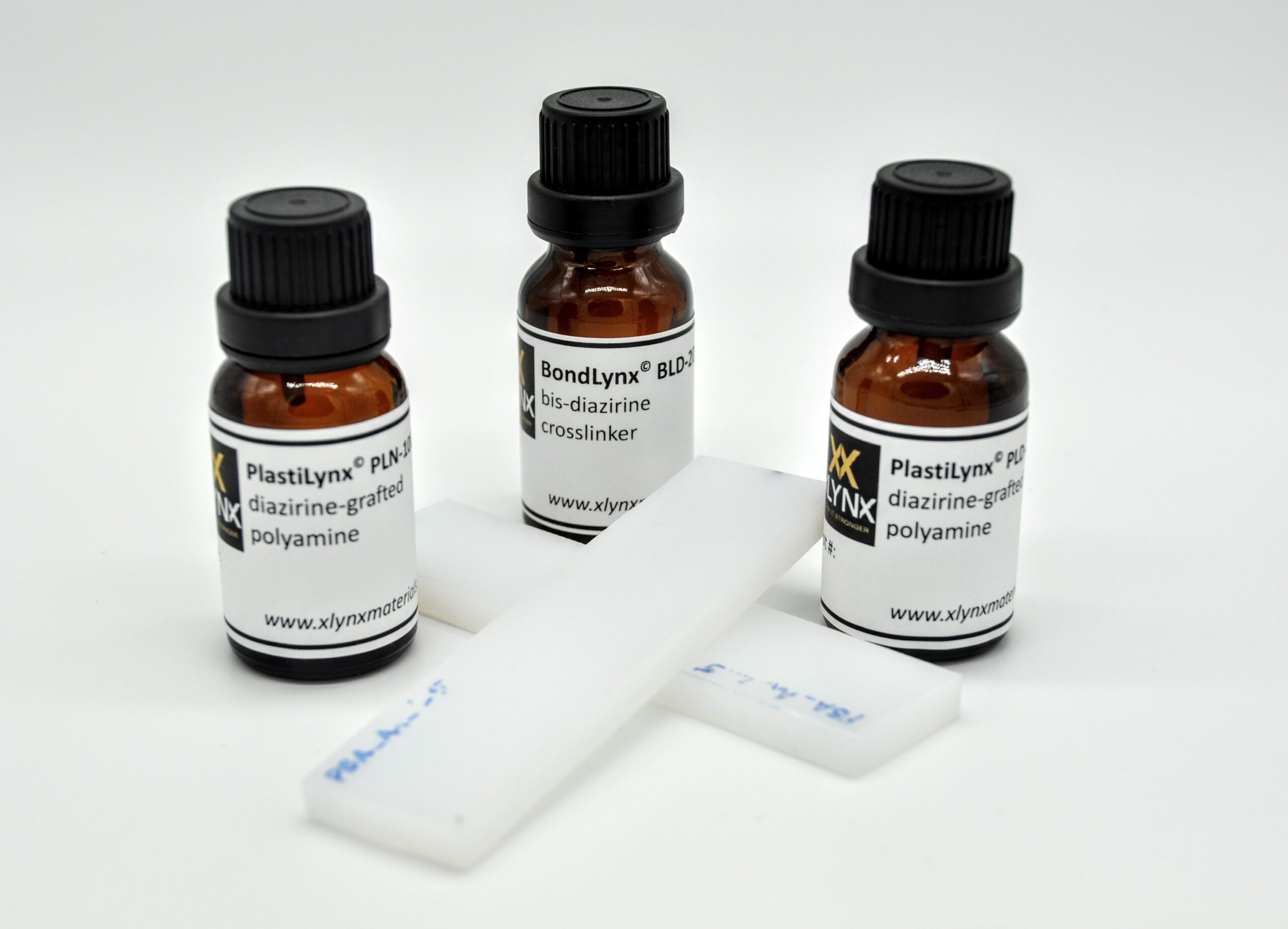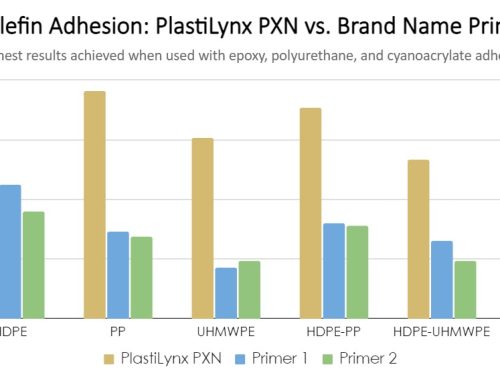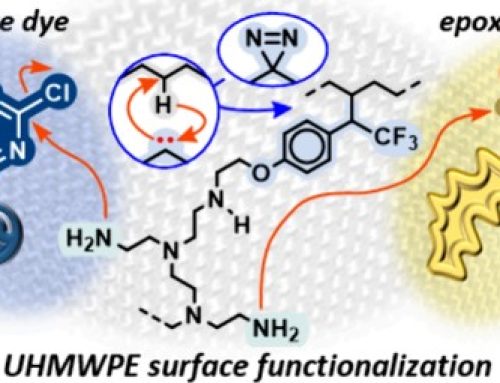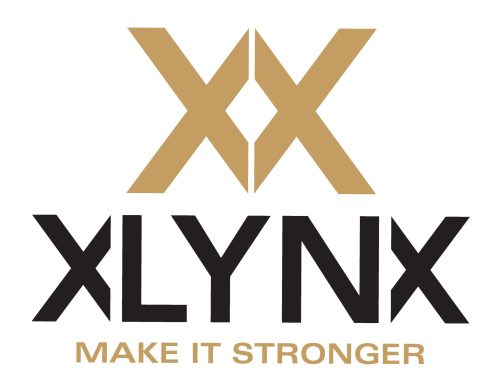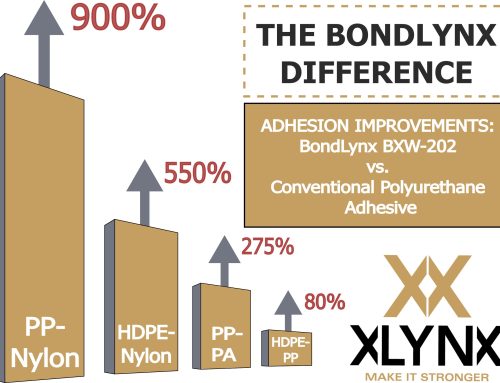We get it.
While we might live and breathe diazirine crosslinking here at XlynX Materials, the concept isn’t exactly common knowledge for most.
For new clients, there can be a lot of questions when the first sample of BondLynx or PlastiLynx arrives at their door. While the topical application and curing of our diazirine crosslinkers is a fairly straightforward process, there are a few common pitfalls first-time clients should avoid.
With this in mind, here are our top three recommendations:
1. Less is More
 BondLynx and PlastiLynx are mixed with solvent for topical application. When applying the solution, it might be tempting to apply a thick coating to get a a strong bond.
BondLynx and PlastiLynx are mixed with solvent for topical application. When applying the solution, it might be tempting to apply a thick coating to get a a strong bond.
More is better, right?
Not in this case. BondLynx and PlastiLynx operate at the molecular level, making covalent bonds with polymer chains on the surface of a substrate. When excess solution is applied, the additional crosslinker may simply bond with itself during the curing process, which can weaken the effectiveness your desired bond. The important thing to remember in your trial is to apply only a thin, even layer. In most topical applications, 1 to 5 mg/in² (0.5 to 2.5 mg/cm²) is enough.
2. Allow for Evaporation
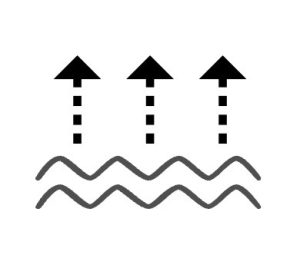 After the crosslinker solution has been applied, it’s important to allow the solvent to evaporate completely before proceeding with the curing step.
After the crosslinker solution has been applied, it’s important to allow the solvent to evaporate completely before proceeding with the curing step.
While the surface may appear dry, we recommend allowing 30-to-45 minutes for solvents like Ethanol or Methanol to evaporate completely. Other solvents, such as purified water, may require additional time. You can use as a lyophilizer or ventilated fume hood to accelerate this evaporation process.
This step is necessary because diazirine crosslinkers are highly promiscuous and will not distinguish between the polymer substrate and trace amounts of solvent when activated during the curing stage. For best results, don’t rush this stage of the application process.
3. Store in a Cool, Dark Location
 We’re often asked how long BondLynx and PlastiLynx samples can last before they “expire”. Storing your samples (neat) in a cool, dark location (fridge or freezer, ideally) can provide remarkable stability. When stored in the dark at -20°C / -4°F, our crosslinkers are stable for at least 4 years.
We’re often asked how long BondLynx and PlastiLynx samples can last before they “expire”. Storing your samples (neat) in a cool, dark location (fridge or freezer, ideally) can provide remarkable stability. When stored in the dark at -20°C / -4°F, our crosslinkers are stable for at least 4 years.
Even when mixed with solvent, BondLynx and PlastiLynx solutions will remain stable for up to 2 months when stored in a cool, dark location.
The important thing to remember about diazirine crosslinkers is that they are light and heat sensitive. Any exposure to UV light or heat, even in the form of natural sunlight or room temperature, will cause them to activate over time, degrading their effectiveness. In recent stability trials, neat samples stored in the light, at room temperature, remained stable for about a week. Mixed solutions in these exposed conditions degraded in as little as a day. Don’t jeopardize the success of your trials by leaving samples exposed to light or heat any longer than necessary.
We’re Here to Help
Our success is made possible through your success. Only through successful trials will you know whether diazirine crosslinking is the right solution for your business.
Every crosslinking application is unique and our knowledgeable team is here to offer answers to whatever questions you may have. While our instructions provide guidance around solvent ratios and curing specifications, the optimum conditions for your trial may depend on variables such as the substrate you’re treating, the solvent you’re using, the application method you’re employing, your curing device, or other factors.
Before getting started, we encourage you to reach out to our team.
Contact us at any time at info@xlynxmaterials.com.


